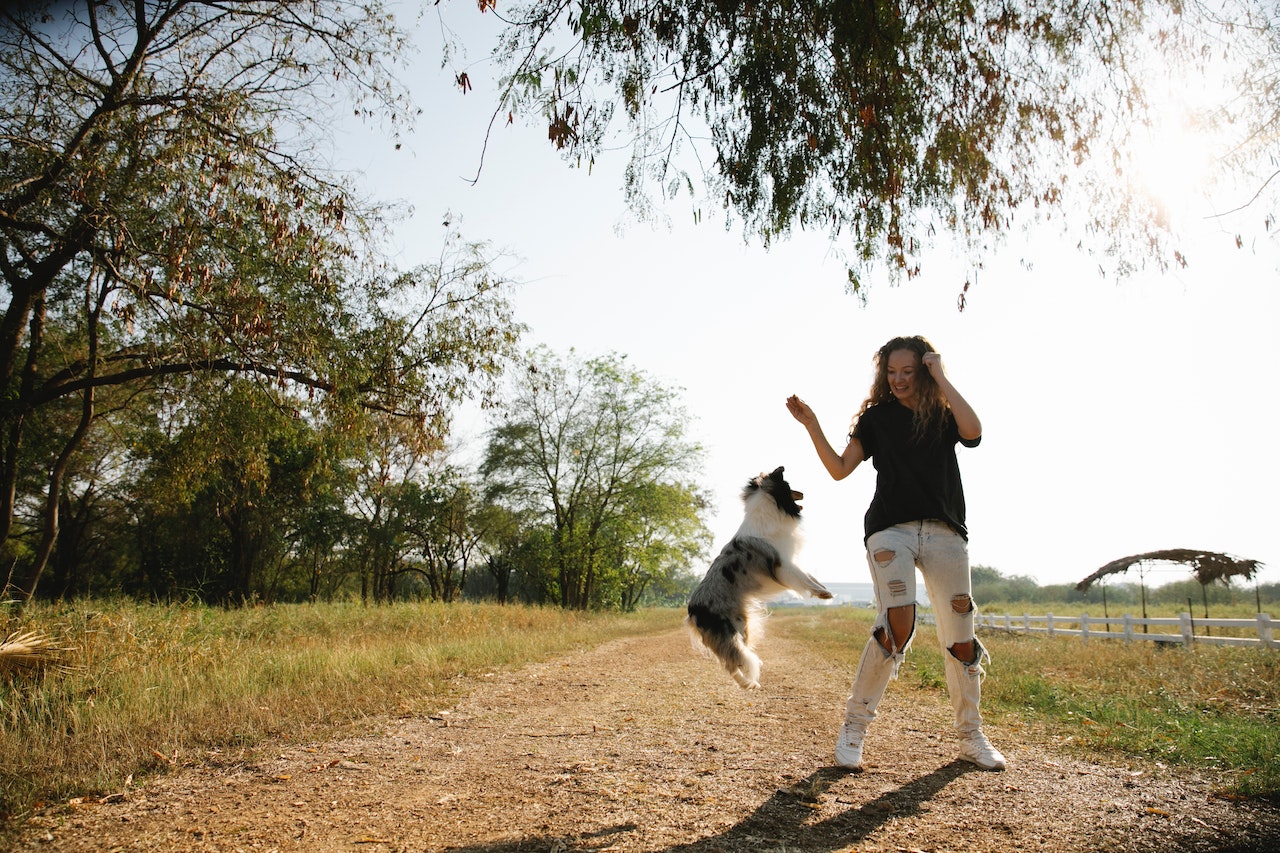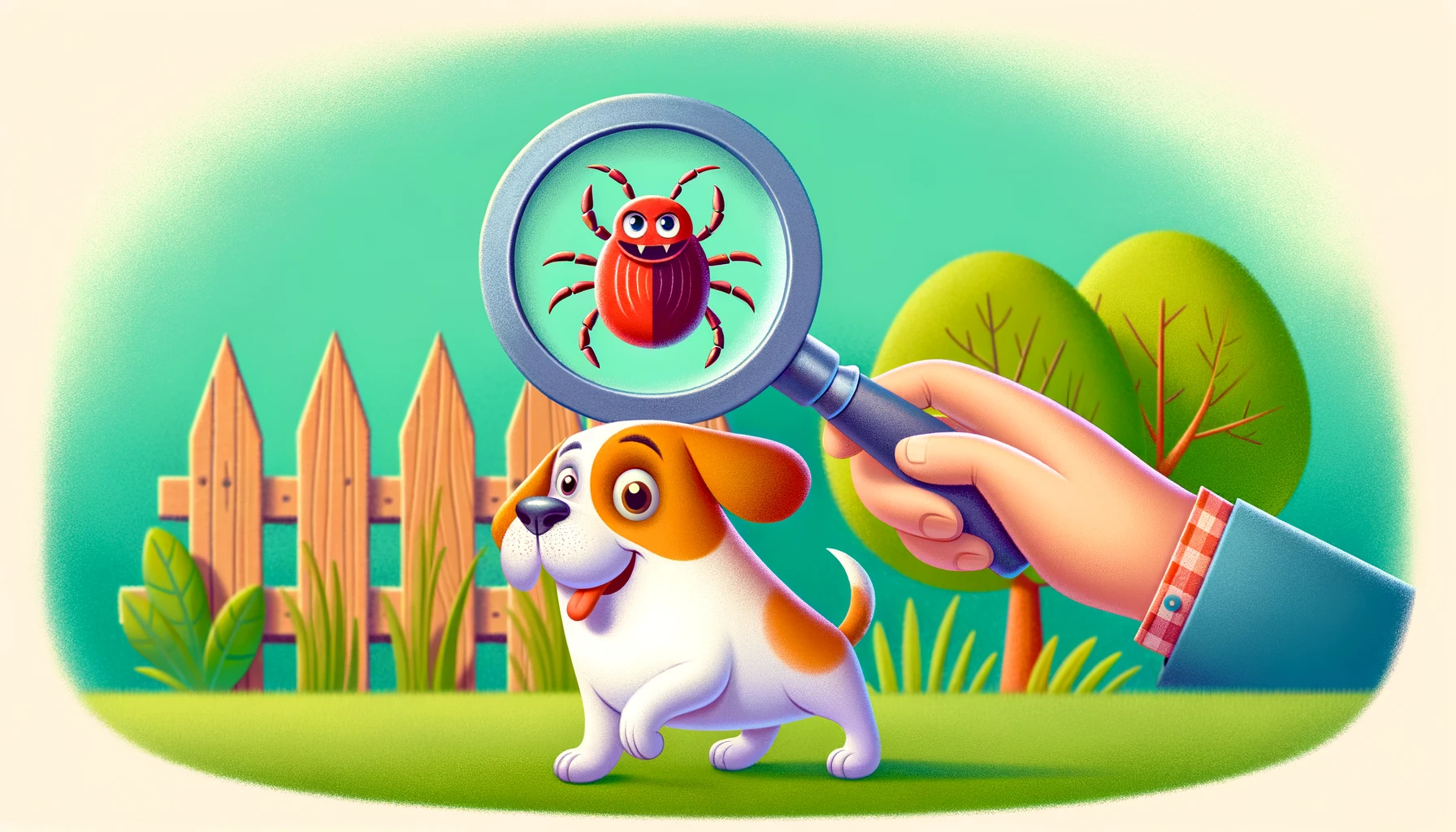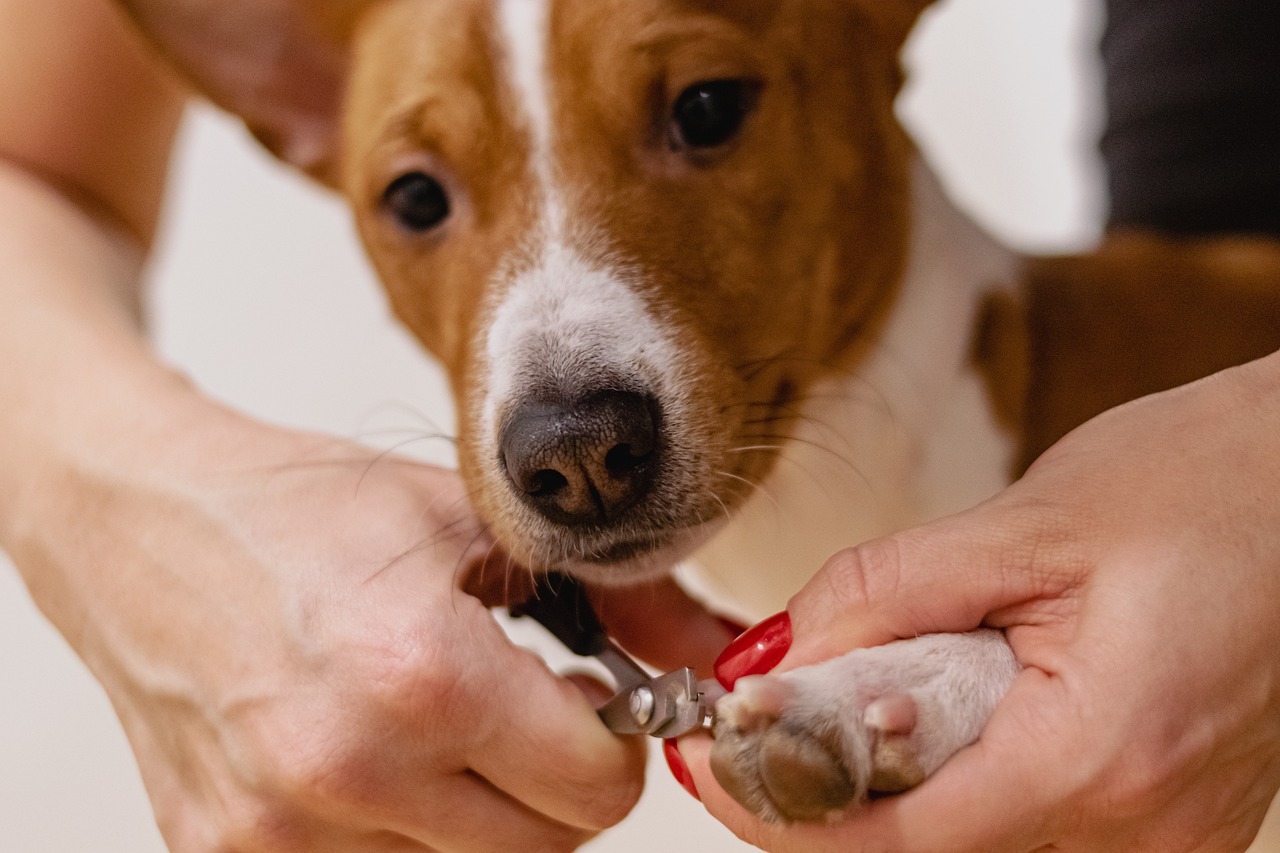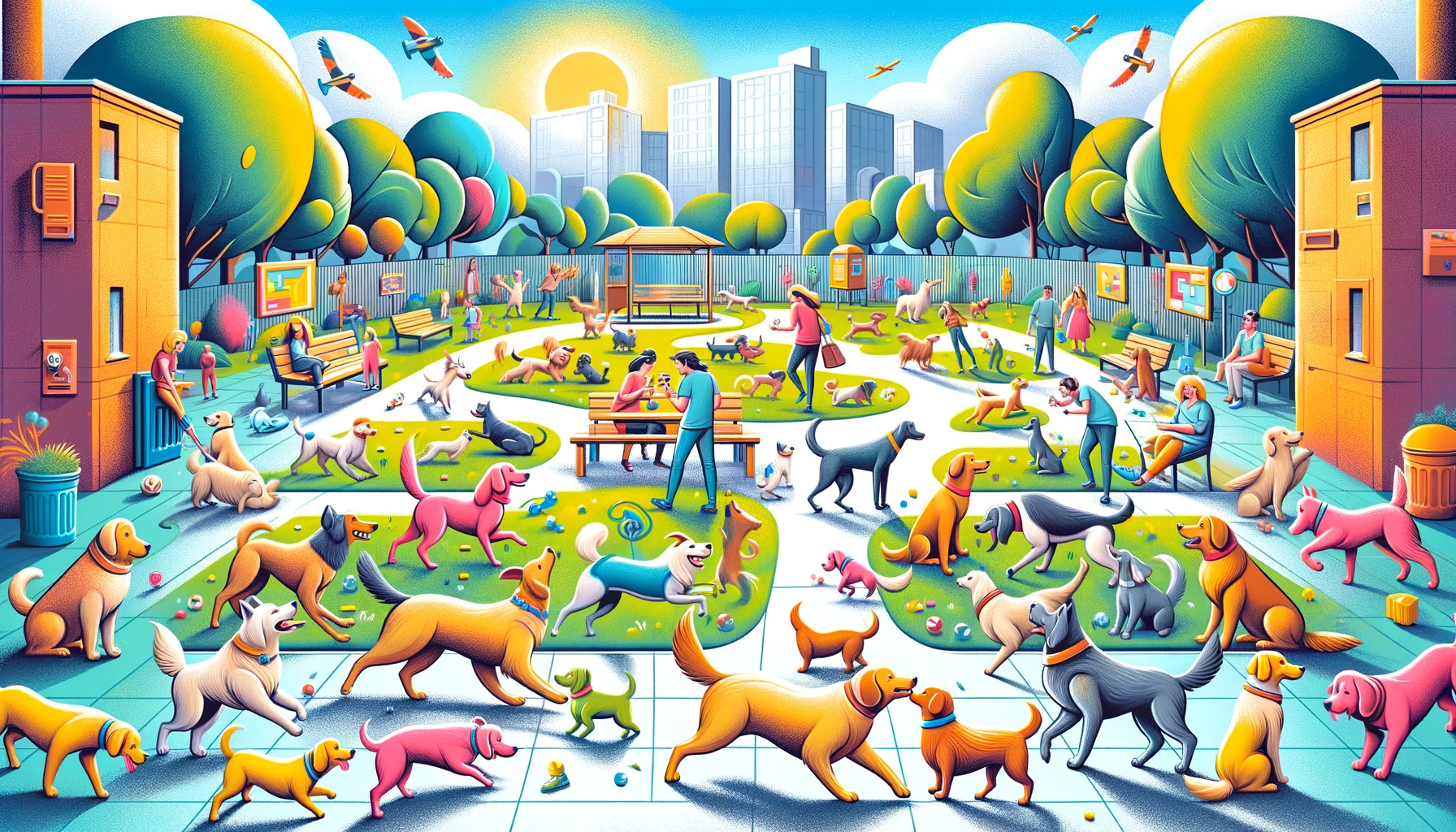The exuberant canine, a creature of boundless joy and seemingly endless energy, especially when it comes to greeting humans. If your dog believes that every guest is a long-lost friend who’s there solely for a Cirque du Soleil-style welcome, you’re not alone. The act of a dog jumping on people can be as embarrassing as showing up to a black-tie event in your favorite dinosaur onesie. But fret not, fellow dog aficionados, for I shall bestow upon you the wisdom to transform your pooch from a jumpy mess to a well-mannered greeter.
First things first, let’s debunk the myth that your dog is jumping out of sheer politeness or an innate desire to whisper sweet nothings into your ear. In doggy world, this leaping lark is a form of communication, often one that says, “Hey, pay attention to me, I’m here, and I’m fabulous!” Unfortunately, while we appreciate their enthusiasm, we need to help them express it in less… airborne ways.
So, strap in (or rather, strap down your pooch), as we dive into our “No More Jumping, Fido!” journey.
Embrace the Zen of Zero Attention
Dogs are like us when we were all toddlers: if we threw food and it got a laugh, guess what? We became tiny food-throwing comedians. Similarly, if your dog jumps and you give them any attention, even if it’s to say “No” in your sternest voice, you might as well have handed them a comedy award. Instead, aim for impassive disregard. Turn into a statue as thrilling as watching paint dry. No eye contact, no words, and no touching. It’s the art of being utterly uninteresting, and trust me, it’s a high art indeed.
The Earthly Rewards System
Once your pooch’s paws remain as planted as a tree in an enchanted forest, that’s when you shower them with attention. It’s all about timing. Wait for all four paws to be on the ground and then, unleash the floodgates of love and treats. Eventually, your dog will realize that being a grounded pooch is like hitting the jackpot in the canine casino of life.
The Alternative Greeting Ritual
Dogs are creatures of habit, and they love a good routine more than a cat loves a cardboard box. Teach your dog an alternative way to greet. This could be anything from a ‘sit’ to a ‘high-five’ that keeps those paws at a non-face-threatening level. Consistency is key. Every time someone enters the domain of your dog, prompt this new ritual. Soon, they’ll be sitting pretty for greetings instead of launching like a furry missile.
Preemptive Strike
If your dog has the jumping prowess of an Olympian, it’s time to get proactive. Exercise your pup thoroughly before they’re in a social situation. A tired dog is a less jumpy dog because physics dictates that it’s harder to launch oneself into orbit when one’s energy reserves are depleted. Who knew that a game of fetch could be such a peacekeeper?
The Secret Life of Leashes: Indoor Edition
Let’s talk leashes, but not in the great outdoors — inside your home. It may sound as wacky as pineapple on pizza, but keeping your dog on a leash while indoors can give you the upper hand (or upper leash?). It’s all about control, and not the kind where you ask your smart speaker to play sad music after a rough day. A leash gives you the ability to gently guide your dog to a more earthbound greeting. The second they seem like they’re about to take off, a calm “sit” command coupled with a gentle tug can remind them that they’re not actually trying to impersonate a kangaroo.
Ignorance is Bliss
Imagine you’re the hottest celebrity in town (work with me here). If you acknowledged every paparazzo, you’d never get anywhere. Treat your dog’s jumping the same way. If they jump up, turn your back and ignore them completely. It’s the celebrity snub, dog edition. When they finally have all four paws on the floor, that’s when the paparazzi (you) give them the shot they want — attention.
Consistency, Meet Everyone
You know what’s more challenging than teaching a dog not to jump? Convincing your family and friends to follow the no-jumping protocol. It’s like herding cats. But it’s crucial. If Aunt Mabel squeals and pats Rufus every time he jumps on her, Rufus will never learn. Make sure everyone is on the same behavioral concert ticket, singing the same “ignore the jumping” tune. It’s a family affair, a group project where everyone gets the same grade, and that grade is “Grounded Pup 101”.
The Power of Distraction
This method is like being a magician where your dog is the ever-eager audience. Keep a toy or treat handy. As someone comes in, use it to keep your dog’s focus at ground level. Throw a toy, or ask for a new trick they’ve learned. If your dog is busy balancing a treat on their nose or chasing after their favorite squeaky toy, they’re less likely to imitate a pogo stick.
The End Game
Ultimately, the goal is to have a dog who sits calmly and serenely, perhaps with a wise look, as if they’re pondering the deeper meaning of life every time someone walks in the door. You want visitors to be dazzled by their decorum, to ask with wonder in their voices, “How did you achieve this paragon of virtue?” And you’ll simply smile, a knowing twinkle in your eye, the sage of dog training, a whisperer of the wilds.
So, fellow dog-lovers, embark on this journey with patience, treats, and a solid game plan. Remember, every time your dog greets someone with all paws on the ground, it’s a small victory. Celebrate those moments. Because one day, you’ll look back on the jumping days with a wistful smile, thinking about how far you’ve both come, from the soaring leaps to the dignified greets.
Your dog’s jumping saga may start off as an overzealous rocket launch, but with these tips and a little bit of humor-infused perseverance, you’ll soon have the pleasure of living with a four-pawed diplomat. Happy training, and may your dog’s enthusiasm for gravity remain forever undiminished — just not expressed through amateur acrobatics.
Pro Tips to Keep Your Dog on the Ground
Here are some additional pro tips, that will ensure that your dog’s social skills are not only improving but also that they’re becoming a well-rounded, pawsitively delightful member of the household.
- The Zen of Routine
Create a greeting routine for your dog. Consistent routines are the crochet patterns of the dog world — once you get the hang of it, you create something beautiful. Have a specific spot where your dog goes whenever someone arrives. With enough repetition, your dog will automatically head to their “greeting spot” instead of launching themselves at newcomers.
- The Magic Word
Find a magic word or phrase that you always use to stop the jumping. It could be as simple as “four on the floor” or as whimsical as “earthworm!” It doesn’t matter as long as you’re consistent. Make sure this word is as effective as a “mute” button on a remote, and you’ll have a powerful tool in your training arsenal.
- Doorbell Desensitization
Often the doorbell is like a starting gun for a sprinter — when your dog hears it, they bolt. Work on desensitizing your dog to the doorbell or a knock. Practice ringing the bell and rewarding your dog when they don’t react with an Olympic high jump trial. Gradually, the doorbell will be just another sound, not the cue for the Canine Jumping Championships.
- The “Say Hello” Toy
Have a special toy that only comes out when guests arrive, which will give your dog something to hold in their mouth. It’s hard to jump up when you’re busy showing off your prized squeaky giraffe. Call it the “say hello” toy, and make sure it’s a toy that’s more exciting than the prospect of bouncing off human chests.
- The Calmness Cloak
Before expecting your dog to remain grounded when guests arrive, ensure they’re in a calm state. This means not getting them riled up with talk like “Who’s that? Who’s here?” in that high-pitched voice that sends them into a frenzy. Instead, exude calmness and they’ll be more likely to mirror it.
- Social Butterfly Training
Take your dog out to public places or arrange playdates where they can practice meeting people in controlled settings. Like taking a kid to a fancy restaurant before meeting the Queen, it’s all about practice. The more opportunities they have to get it right, the better they’ll behave.
- The Fine Art of Tethering
In situations where you anticipate a lot of people (and hence, a lot of potential jumping), use a tethering method. Attach your dog’s leash to a sturdy object where they can see and greet people but can’t do their full-body tackle. This is a great way to manage their greetings while you’re still working on the finer points of their training.
- The Unseen Mentor
Consider the invisible influence of another, well-behaved dog. Sometimes, dogs learn best by example. If you have a friend with a dog that has impeccable manners, let your dog hang around this four-legged mentor. It’s like shadowing the top employee at the office; sometimes the best lessons are caught, not taught.
Frequently Asked Questions
Absolutely, with the right mix of consistent training, exercise, and patience, your dog will leave the high jumps to the professional athletes. It’s all about channeling their inner zen dog instead of their inner kangaroo.
Yes, much like teenagers get bored when the Wi-Fi goes out, dogs will soon find jumping on a non-responsive statue utterly uninteresting. Just remember, consistency is your friend, not the exciting kind, but the kind that gets results.
It’s all about making “sit” more appealing. Use treats, praise, and the sort of enthusiasm usually reserved for winning a game show. Soon, sitting will be the best option in their mind.
Sit them down for a good old family meeting and explain that every time they encourage jumping, a dog trainer loses their wings. Or, more effectively, let them know it’s a team effort to keep the dog grounded — literally.
Definitely. If you have a cat that’s constantly leaping on counters or a bunny that loves to hop, your dog might get the wrong message. Try to keep all pets’ acrobatics to a minimum unless you’re planning to open a home circus.
While it may feel like trying to drain the ocean with a slotted spoon, it is possible. A good run, a session of fetch, or a stimulating puzzle toy can all serve to take the edge off their energy.
Your dog might be sensing something there (who doesn’t have interesting in-law stories?), but more likely, they’ve gotten a reaction before that’s worth repeating. Coach your in-laws on the no-reaction rule and treat them as part of the training team.
It’s never too late! Old dogs can learn new tricks, despite the saying. They might just learn at their own leisurely pace, like a grandparent learning to use a smartphone.
Some breeds have more spring in their step, like Boxers or Jack Russell Terriers. But with the right training, even the bounciest of breeds can learn to keep all paws on the ground.
Practice, practice, and more practice. Different environments can trigger different behaviors. Keep up the training and make sure to reward heavily for good behavior in new settings.



